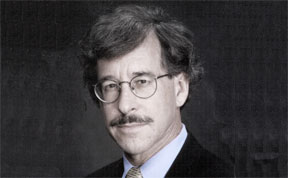video part 1
view at youtube or download video
video part 2
view at youtube or download video
What Roboticists Need to Know About NeuroMusculoSkeletal Systems
One of the main reasons for employing impedance control of mechatronic systems is that it endows them with some of the desirable properties of biological systems. This tutorial will survey the relevant design and behavior of the biological counterparts to the linkages, motors, position encoders, strain gauges and servocontrol loops available in mechatronic systems.
Most (but not all) skeletal joints can be reasonably described as equivalent to hinge (1 DoF) or ball (3 DoF) joints, but there is no simple relationship between DoFs and muscle actuators. Over half of the muscles cross more than one joint. Most have moment arms at each joint that change substantially with joint angle(s). Muscles can only pull, not push, so must be used in antagonist pairs. However, most DoFs are acted upon by more than two muscles whose actions are not symmetrical. The set of muscles is over-complete in terms of generating static torques and end-point forces, but may not be in terms of producing complex impedance states for the whole limb.
The force-generating and energy-storage capabilities of a given muscle depend on the arrangement of its muscle fibers and in-series (tendons + aponeurosis) and in-parallel (endomysium) connective tissues and the types of muscle fibers from which it is composed. The lengths and cross-sectional areas of muscles and connective tissues and the fiber types themselves are under the influence of trophic factors; they can be changed by patterns of use and exercise. The tension generated in a given muscle depends complexly on the history of its excitation by the motoneurons that control its many muscle fibers as well as by the length and velocity of motion of its contractile elements. Importantly, the biochemical processes associated with activation and contraction consume energy in such a way that muscles can produce higher forces more economically when doing negative work (i.e. being stretched against their direction of active force-generation). Organisms exploit this through their patterns of motion.
Each muscle is equipped with hundreds of sensors of various types. Golgi tendon organs (GTO) sample the tension in small numbers of muscle fibers; their ensemble output is a fairly linear representation of total muscle force. Muscle spindles transduce a combination of length and velocity of the muscle fibers, depending on the state of tiny muscle fibers inside them that the central nervous system uses to control their sensitivity over a wide dynamic range. There are also various sensors of chemical events associated with pain, fatigue, blood supply, etc.
The proprioceptive signals (GTOs and spindles) from various muscles are mixed together in complex circuits in the spinal cord that project back to the motoneurons that control the individual muscles. Some of this feedback results in reflexes similar to servocontrol (e.g. negative force feedback, positive length feedback within a single muscle), but much of it passes through much more complex interneuronal circuits that converge sensory signals from various modalities and muscles and distribute them to many muscles, not just those from which the sensory signals arose. These same interneurons receive most of the descending input from the brain that is used to command voluntary and learned movements, rather than having the brain directly control individual muscles. Much of this circuitry has been fairly well-described. Realistic models based on the known circuitry and properties of proprioceptors and actuators have large numbers of control variables representing this descending input, but this highly evolved and phylogenetically conserved circuitry appears to facilitate rapid learning of a wide range of stable behaviors.

